Before I start, I would like to say this has been one of most difficult of these articles to write. This is because it’s discussing a concept that is so broad in its application and so varied that trying to codify it into a single ‘doctrine’ or conceptual framework has proved very difficult. One of the main difficulties, for me, was coming up with a descriptively useful yet simultaneously concise definition of dynamic delay. The other was finding examples that showed the dynamic delay principle in isolation and not to open up to many rabbit holes the discussion or post to disappear down. I think and I hope, that I have managed to achieve that balancing act.
So without further ado, the fundamental Judo skill – Dynamic delay
"Dynamic delay is the process of controlled deceleration and subsequent acceleration by tori relative to uke’s constant motion."
It is easy for us to observe gradual and or obvious deceleration and acceleration, a car braking, Usain Bolt flying out of the blocks etc... However, what is harder for us to observe is sudden and momentary deceleration and acceleration and indeed one being a consequence of the other.
When seeking to explain and illustrate this principle it occurred to me that some of the clearest and most accessible examples come from outside the world of Judo and occur in team sports such as Rugby. In Judo often the action is concealed by the clothing of the two players and the myriad of minute adjustments and split second action. However, in a sport such as rugby with a lone figure in a wide open space with a clear view of the uncovered legs and feet it becomes more obvious.
The most famous example of dynamic delay in team sports, to an Englishman, is rugby player Jason Robinson. Robinson has a truly exceptional life story a former alcoholic who found God and phenomenal form on the pitch. Who went on to cover himself in glory representing his county, succeed in both codes of Rugby and be blessed with a unique a special privileged amongst sportsmen – scoring the winning try in the final minutes of his last ever match for his club. However, it was his mastery of dynamic delay that is of interest to us today.
Here is some footage of Robinson using the principle of dynamic delay to slice through the French backline and score a phenomenal try from the set-piece, apologies to those reading from France.
What is useful to us from this footage, apart from the excellence of English rugby in comparison to France... Is that Robinson accelerates after catching the ball and then spotting the opportunity (debana?) in an opening of the French line very rapidly decelerates to a stand-still and re-accelerates to sprinting speed in a matter of fractions of a second. By his rapid deceleration and acceleration Robinson completely out manoeuvres the French defence whose speed, in tracking across the field, remains constant.
I’m sure those of you familiar with Football, Hockey, American football etc... can think of similar examples from those sports. And please do so, if it helps you wrap your head around the concept. As, I believe, presented as a purely Judo phenomenon devoid of kinesiological context makes it harder rather than easier to understand.
So now if we return to my earlier definition of dynamic delay as:
“The process of controlled deceleration and subsequent acceleration by tori relative to uke’s constant motion.”
And apply that to the Robinson video where Robinson is tori and the French defence uke. Then I think we can start to make some sense of the issue at hand.
Let’s examine this video of the dynamic delay being applied to Okuri ashi barai.
Dynamic delay Okuri ashi barai
Tori and uke start moving in tandem, level with one another.
Tori then decelerates and delays his own movement, allowing uke’s advancing foot to continue, whilst tori’s feet remain level with uke’s trailing foot
Uke’s advanced foot touches the mat and Tori then accelerates into his advancing step whilst uke’s speed of motion remains constant
This dynamic delay and subsequent acceleration by tori, whilst uke’s speed of motion remained constant combines with the accelerated and exaggerated step by tori. The result is that there is potential energy loaded into tori’s trailing foot and it can accelerate much faster than uke’s trailing foot.
Tori’s foot, travelling faster than uke’s, makes contact with uke’s foot accelerating uke’s motion at a rate he is not prepared for.
Uke’s weight transfer process is disrupted by tori accelerating the trailing foot to a speed uke is unprepared for. Combined with a proportionate and appropriate kuzushi action tori disrupts uke’s weight transfer process in a way that is irrevocable and uke is thrown clean off their feet.
As regular readers will know I don’t favour this method of practicing Okuri ashi barai, precisely because it’s much harder for tori to control the dynamic delay process. It requires a very competent and intelligent uke to be fully accessible. However, if you apply the principles outlined in this post to my preferred method of Okuri ashi barai you will find they both rely on dynamic delay.
Dynamic delay is, however, not purely applicable to ashiwaza although that is where most people encounter it and it where most people struggle with it.
Dynamic delay for Tai otoshi
I have had to slow this video down twice as much as normal because Adams is just so fast.
Adams starts moving his uke
Adams then begins his dynamic delay sequence, he advances his left foot with an exaggerated forward step and visibly slows relative to his uke
Adams then brings his trailing right foot to his advanced left foot in a tsugi ashi type motion, coming soon on the blog, visibly slowing and pausing in a manner reminiscent of Robinson.
Adams then uses the impetus from the tsugi ashi action accelerates his left foot into position, whilst uke’s rate of motion remains constant.
Adams accelerates further as his trailing right foot advances to the point of the triangle uke’s rate of motion remains constant.
His trailing foot then spins his left into position and the advanced right foot shoots across for the Tai otoshi, accompanied by a strong, accomplished kuzushi action.
And the perfect ippon.
I have include two pieces of footage of Adams applying the dynamic delay principle to Tai otoshi after having dissected the first I will just leave a series of screen grabs for the second. I call this method of applying dynamic delay the stutter step, the reason should be obvious. This is a very common way of applying it for major forward throws on a retreating uke and can be used for the whole gamut of techniques – Uchi mata, Seoi nage, Harai goshi etc...
Dynamic delay for O uchi gari
There’s a slight miscommunication between Katanishi and his uke so we pick up the action with that miscommunication removed.
Katanishi advances with his left then suddenly decelerates allowing uke to continue retreating with his left despite Katanishi not advancing with his left.
He then advances with his right, cross stepping and placing it in front of uke’s right which is commencing its retreat.
Uke then continues his retreat whilst tori’s advanced right foot remains constant and tori’s trailing left foot accelerates to a position behind the right.
Tori then accelerates his advanced right foot to catch uke’s left foot as it is fully weighted.
Ippon
Seen from another angle
Hopefully now you have a fuller grasp of the process of dynamic delay, which I have defined as best I can as:
"The process of controlled deceleration and subsequent acceleration by tori relative to uke’s constant motion."
I’ll leave you with two examples of dynamic delay in action, not included in this piece to show the wide applicability of the principle. It is important to remember the definition and that this is a principle there is no one set method of achieving dynamic delay and all throws, players and situations can have their own methods.

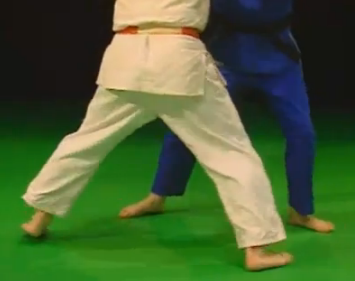

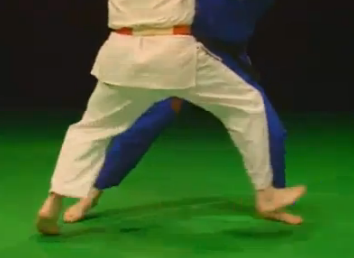


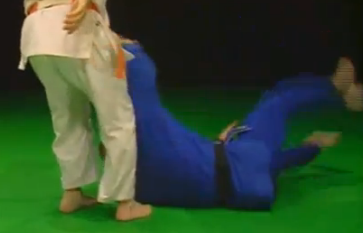

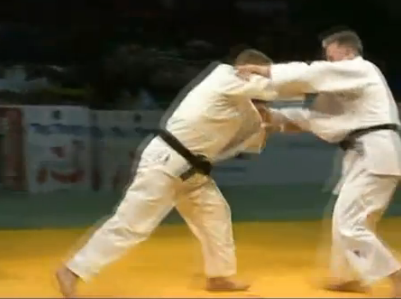

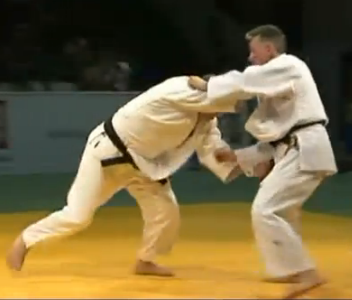



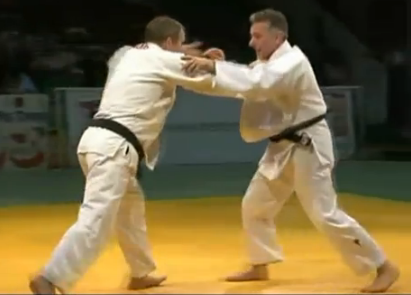
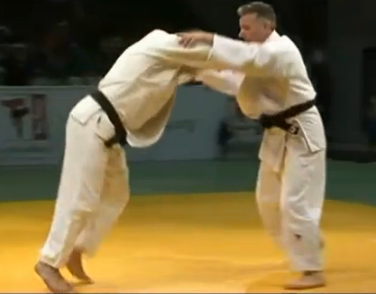
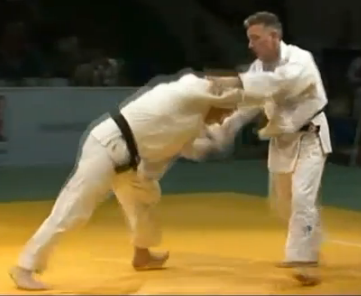

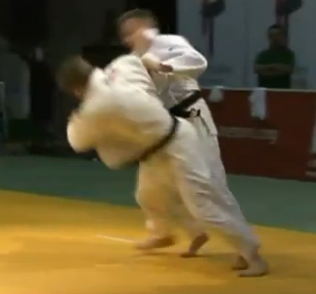
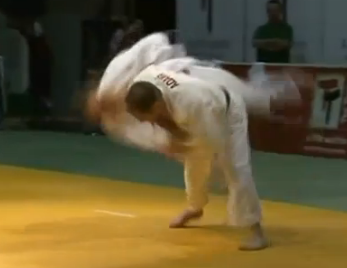

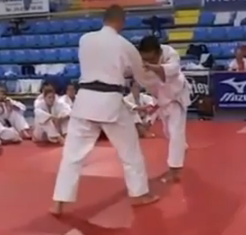


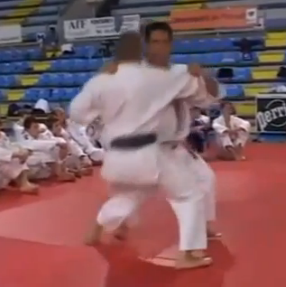
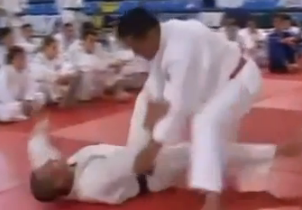
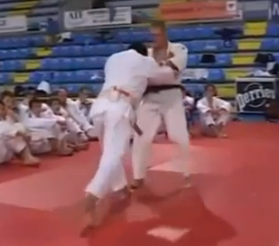
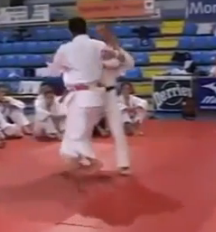
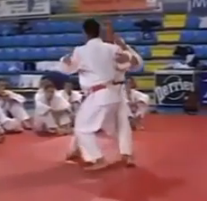
i've had my coach explain this to me in a similar, differently worded fashion. your speed of entry relative to the opponent. either purposefully faster than the speed at which he is moving, or as above, purposefully slower than the speed at which he is moving, allowing the space for the entry. thanks for the elaboration and time spent with the still frames/video.
ReplyDelete